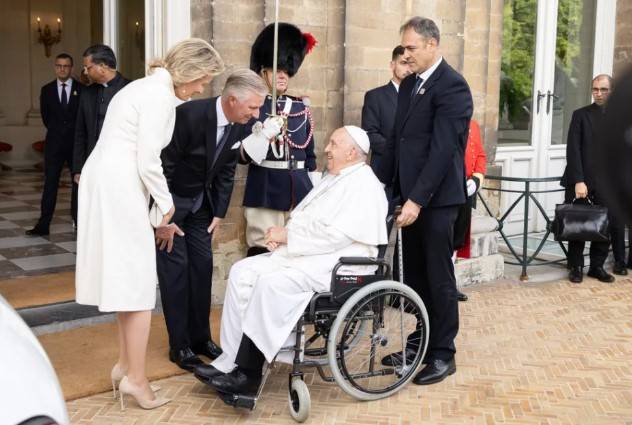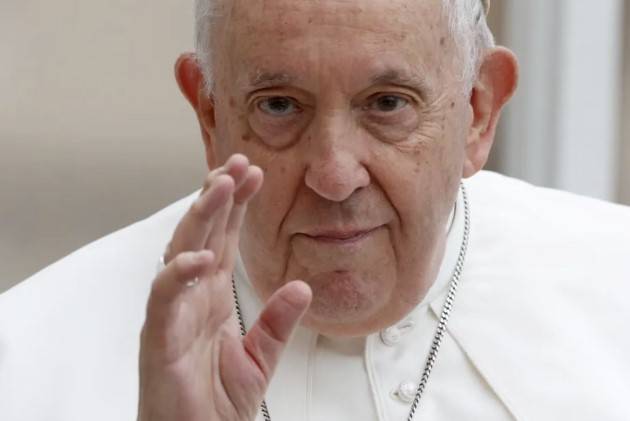Since his hospitalization earlier this month, Pope Francis’ health has been under close scrutiny by the Vatican and the global media. New updates have now shed more light on his condition, revealing that his health challenges are more serious than previously thought.

Hospitalization and Early Updates
On February 14, Vatican News reported that Pope Francis was admitted to the Agostino Gemelli Polyclinic in Rome following his morning audiences. This decision came as the Holy See Press Office confirmed that the pontiff had been suffering from bronchitis for several days—a condition that made it increasingly difficult for him to speak during public events. In fact, due to his worsening health, he had already delegated his prepared remarks for his Wednesday General Audiences. Earlier, on February 6, the Vatican had announced that the Pope would hold his audiences from his residence at Casa Santa Marta because of his ongoing illness.
Worsening Condition: From Bronchitis to Pneumonia
After his admission, doctors at Gemelli Hospital performed a series of diagnostic tests, initially treating him for bronchitis and working to prevent further complications. However, by February 18, his condition took a turn for the worse when doctors diagnosed him with bilateral pneumonia. The Holy See Press Office explained that the infection was polymicrobial, meaning it involved multiple types of bacteria. To combat this, the medical team began a complex treatment regimen that included both corticosteroids and antibiotics.
A Critical Update on February 22
The situation became even more concerning on February 22, when the Vatican released a new statement via Instagram. The update revealed that earlier that day, Pope Francis had experienced an asthma-like respiratory crisis. Due to this crisis, he required high-flow oxygen to help him breathe. Additionally, blood tests showed that the Pope was suffering from thrombocytopenia (a low platelet count) and anemia, conditions serious enough to require blood transfusions.
The update also noted that although the Pope was awake and able to sit in an armchair, he was noticeably more fatigued than the previous day, and his overall condition was still critical. As of February 23, it was reported that Pope Francis had spent nine consecutive nights in the hospital, with a Vatican statement confirming that he continued to receive treatment for his double pneumonia at Gemelli Hospital.
Insights from the Medical Team
During a press conference held at the hospital, Dr. Sergio Alfieri, the head of the Pope’s medical team, and Dr. Luigi Carbone, the Vice-Director of Vatican healthcare services, spoke for about forty minutes with journalists. They provided a detailed account of the treatment and care that the Pope was receiving. Dr. Alfieri clarified that although Pope Francis was struggling with his breathing, he was not on a ventilator. He explained that the Pope was still having difficulty with physical movement and required careful monitoring.
In a light-hearted moment during the press conference, when a doctor greeted the Pope by saying, “Hello, Holy Father,” the Pope responded with a warm, humorous “Hello, Holy Son.” This brief exchange offered a glimpse of his resilient spirit despite the severe challenges he was facing.
The doctors expressed particular concern about the risk of a bacterial infection entering the Pope’s bloodstream—a condition that could lead to sepsis, a life-threatening complication. Despite these challenges, Dr. Alfieri remained cautiously optimistic, stating that while the Pope’s chronic respiratory issues might continue after his hospital stay, he expected that Pope Francis would eventually be discharged and return to his residence at Casa Santa Marta.
A History of Health Challenges
This is not the first time Pope Francis has faced serious health issues. In March 2023, he was hospitalized for several days due to a respiratory infection. At that time, the Vatican confirmed that he was experiencing breathing difficulties and required an extended stay at Gemelli Hospital for further tests and treatment. Although COVID-19 was ruled out, the incident served as an early warning of his frail respiratory condition.
Later, in June 2023, the Pope underwent abdominal surgery to correct a painful incisional hernia—an issue stemming from previous operations that had caused intestinal blockages. After spending nine days in the hospital, he returned to the Vatican, choosing to make a discreet entrance through a side gate to avoid the throng of reporters waiting outside.
Public Response and Global Support
As news of Pope Francis’ ongoing health issues has spread, supporters from around the world have sent an outpouring of prayers and well wishes. His condition, now described as critical following his recent asthma-like crisis and subsequent complications, has been met with both concern and hope. Devotees and believers alike have taken to social media to express their solidarity and to pray for his recovery.
Images and updates from the Vatican have sparked widespread discussion about the importance of his leadership and the challenges he faces in his advanced age. Many view his survival and continued work as a testament to his resilience, while others worry about the long-term impact of his chronic health problems on his ability to serve as the spiritual leader of millions.
Looking Ahead: Treatment and Recovery
As of the latest updates, Pope Francis is still undergoing treatment for his double pneumonia at Rome’s Gemelli Hospital. Doctors expect that he will remain hospitalized for at least another week as they continue to manage his complex condition. While the Holy See Press Office reassures the public that the Pope is not in immediate danger of dying, it is clear that his health remains fragile.
The focus for the medical team now is to control the infection, support his breathing, and manage his low platelet count and anemia through careful treatment and transfusions. Despite the critical nature of his condition, the Pope has been reported to be in “good spirits”—a remarkable sign of his enduring faith and resilience. He continues to rest, pray, and even read, and he has received the Eucharist as part of his ongoing treatment.
A Leader’s Legacy in the Face of Adversity
Throughout his papacy, Pope Francis has been admired not only for his spiritual leadership but also for his humility and commitment to serving the people. His previous encounters with health challenges have only deepened his connection with the faithful, who see him as a symbol of perseverance in the face of adversity.
Now, as he faces this latest crisis, the global community watches with bated breath. Medical experts have noted that while the immediate threat of his illness has been managed, the risk of complications such as sepsis remains a concern. The Pope’s doctors are working diligently to ensure that he recovers fully, though they caution that his chronic respiratory issues may persist long after he leaves the hospital.
The Broader Implications for the Vatican

Pope Francis’ health is not just a matter of personal concern—it has significant implications for the Vatican and the global Catholic Church. The stability of the papacy is a matter of international interest, and his prolonged hospitalization has led to discussions about the future of church leadership and the challenges of maintaining continuity in the highest office of the Catholic Church.
The Holy See is taking every step to ensure that the Pope receives the best possible care while keeping the public informed. Regular updates via Vatican News and the Holy See Press Office have aimed to balance transparency with respect for the Pope’s privacy. This careful communication is vital in reassuring the faithful and maintaining stability during a period of uncertainty.
Personal Reflections and the Human Side of the Crisis
For those who have followed his journey, Pope Francis’ recent hospitalization is a sobering reminder of the human side of leadership. Despite his role as a global spiritual leader, he remains a man with vulnerabilities, facing serious health challenges as he ages. His determination to continue his duties—even while battling bronchitis, pneumonia, and other complications—is a testament to his commitment and resilience.
The Pope’s experience has also touched many hearts around the world. Stories of his humility, such as the fact that he delegated his prepared remarks during his General Audiences and continued to receive the Eucharist despite his worsening condition, serve as powerful reminders of his deep personal faith and devotion. His ongoing struggle to overcome these health challenges resonates with many, making his recovery a matter of both spiritual and practical importance for millions of believers.

A Look Back at Previous Health Crises
Pope Francis is no stranger to health issues. His hospitalization in March 2023 for a respiratory infection and subsequent surgery in June 2023 for an abdominal hernia remind us that even the most resilient leaders face periodic challenges. Each time, the Vatican has provided updates that both informed the public and reassured the faithful that the Pope is receiving top-notch medical care.
These past experiences have also highlighted the effectiveness of the Vatican’s healthcare system and its ability to handle crises. Now, as he faces yet another serious health challenge, the world watches and prays for his speedy recovery.